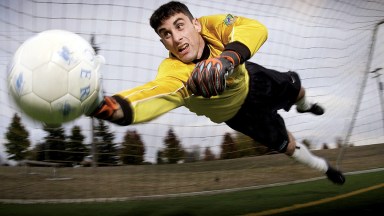The 2018 World Cup kicks off on 14 June with the host nation, Russia, playing Saudi Arabia. Even with over four weeks to go, we are already starting to see the retailers get behind the tournament with special packs, sticker albums, football merchandise and team kits in stores.
We know that beer sales go up during a football tournament, so what does this mean for sales during the world’s largest global sporting event?
England’s first match is versus Tunisia, and television coverage starts at 7pm. In 2014, the tournament was held in Brazil and football fans had to wait late into the night to watch the matches. The change in time zone will help sales of beer both in the on-trade, as fans stop in at the pub after work to watch the games, and in the off-trade, as the starting time also makes it much easier for fans to watch it at home with family and friends.
The performance of home nations plays a massive part in determining how sales of beer fare during the tournament. We typically see that the first week of the tournament shows a big increase in sales, with spikes occurring in line with dates of England matches. But if (or when!) England are knocked out, sales plummet rapidly. With England positioned against Tunisia, Belgium and Panama in Group G, hopes are high that they will get through the group stages – which should mean sales are “safe” for at least the first two weeks.
It’s not just the timing of the matches, the teams which are playing and the performance of England which determine how much beer is sold during the World Cup. The weather is hugely important, so the perfect mix would be an England match at the weekend when the sun is shining. The combination of these factors works well for a sociable occasion such as a barbecue and watching the match with groups of family and friends.
In years gone by, we normally see that it’s the big, mainstream brands of lager which are most closely associated with football, with several of them being sponsors of the tournament or the competing teams. Over summer 2014, mainstream brands accounted for 87% of all the beer sold. Last summer, mainstream brands’ share slid to 81%, as shoppers increasingly turned to world and craft beer. We anticipate that the World Cup will still be a huge focus for the big brands, but they will really need to stand out compared with the smaller brands to tempt shoppers back.
For retailers to grow their sales during the World Cup, getting the beer offering right is key, and selling directly from chiller cabinets will appeal to football fans who buy their beer shortly before kick-off. Manage stock levels carefully: we’ve seen in the past that shelves can empty quickly, especially if England gets through against the odds.
It’s not just about beer though: there are opportunities to sell across other categories. With consumers becoming increasingly mindful of moderating their consumption, some football fans won’t want to drink, so ensure that drinks ranges cater for them and for children. Spirits, especially gin, are in strong growth, so make it easy for shoppers by merchandising spirits next to mixers, garnishes and ice. If there’s a gathering for a match, there’s a need for food as well as drink, so stock up on nibbles and other foods which are quick and easy to cook and share.
Originally published in Drinks Retailing News, May 2018



